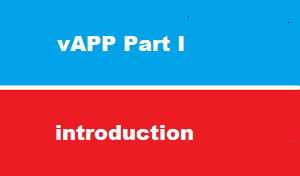introduction
VApps allow VMs to work together in a stack as an application, and support cloud computing architectures
this article will get introduction about vAPP before see how to configure it in pioneers LAB
what is vAPP
A vApp is a grouping of virtual machines and is managed as a virtual machine.
vAPP can contain resource pools
vApps have the flexibility of being able to be deployed inside a folder, resource pool, cluster, or another vApp
A vApp functions as an administrative unit that can be powered on, suspended, powered off, and cloned. The VM start sequences can save your time
Imagine that you need to deploy an application that uses the Active Directory Domain Controller for authentication, a database or a file server to store content, a web server, an application server and a Microsoft Exchange Server to send email messages.
Each component is installed on a separate VM.
In this case, the boot order of VMs should be as follows:
- Active Directory Domain controller/DNS server
- Database server/file server
- Web server
- Exchange server
- Application server
You can create a vApp, add these five VMs to the vApp and configure the boot order for these VMs in the vApp settings. VMware Tools are required to be installed to shut down VMs correctly.
vAPP vs Resource Pool
vAPP is similar to resource pool
BUT….
- vAPP has additional features like assign task to all VM inside vAPP at once
- also vAPP could be created on [datacenter level] or [cluster level]à while resource pool could be created in cluster level only
Exporting vAPP
OVF is the default distribution format for vApps and consequently a vApp can be exported to as such.
Exporting vApps is a great feature to have as it allows you to backup an entire environment to a single file which you can re-import at any time to the original hosting vCenter Server or an alternative one.
Please note that the vApp must be powered off before it can be Exported .
Cloning vApps
You can clone vApps much as you clone VMs.
- Shut down the vApp and make sure that all VMs of the vApp are powered off.
- Right-click the vApp and in the context menu select All vCenter Actions > Clone.
- In the New vApp wizard > select cloning options much like you would have selected for creating a new vApp and cloning standalone VMs.
Nested vApps
nested vApps allows you to create vApps inside a parent vApp which provides you with a more granular approach to vApp management.
A complex application can use multiple multi-tier applications that, in turn, consist of multiple VMs grouped using vApps.

